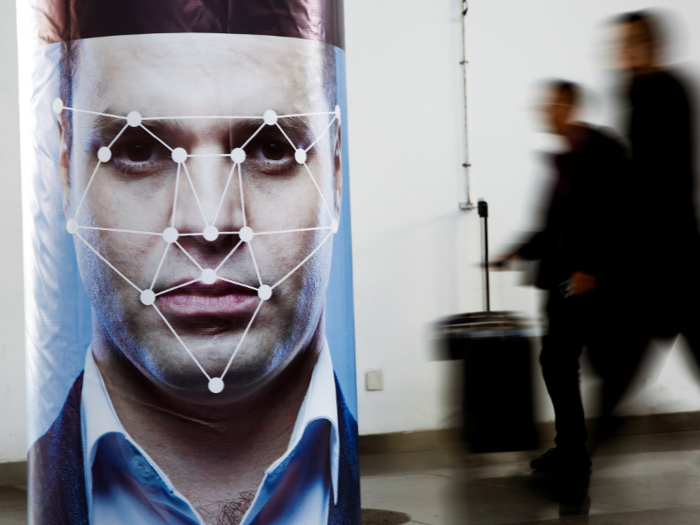
Facial recognition technology is now sophisticated enough for police to use stationary cameras to perform real-time scans of crowds of people walking through the streets or public squares, with AI searching for potential matches to faces of known suspects. The technology is used by the FBI, as well as by police departments scattered across Florida, Ohio, Maryland, and California.
Facial recognition technology is fallible, however, and could potentially make a false match. For that reason, a coalition of activists and AI programmers have called for law enforcement agencies to stop using the technology, NBC News reported.

Like facial recognition, video analytics software scans footage and uses artificial intelligence to identify people and objects that could provide clues to law enforcement, like bags, clothes, or cars that could be tied to a suspect.
It's unclear exactly how many police departments nationwide use video analytics software. IBM licensed its version of the software to multiple police departments before withdrawing it from the market in April, although it continues to support police departments with existing contracts.

Law enforcement agencies are taking advantage of social media platforms' massive reach and ready-made surveillance tools, such as the ability to search users by name and identify a network of their friends and family.
In a survey of more than 500 local police departments in 2016, three-quarters reported using social media to solicit tips and gather intelligence for investigations. Another 60% reported that they directly contacted social media companies to obtain information related to a suspect.

Police are using algorithms to parse crime data in order to predict where future crimes are likely to occur, as well as to generate lists of individuals who the AI thinks may be likely to commit a crime.
Little is known about the degree to which police departments use this technology, but a three-year legal fight between the Brennan Center and the NYPD has exposed how the department sought out such AI and used it routinely. The technology has also been used by police departments across California.

These devices send out powerful signals that mimic cell towers, tricking people's cell phones within range into connecting to them. Once connected, police can use Stingrays to learn cell phones' location and unique ID numbers.
Stingrays are used by 75 police departments in 27 states, according to the ACLU. Fourteen national agencies, including Immigration and Customs Enforcement, the FBI, and the IRS are also known to use Stingrays.

Advances in tech are making it more inexpensive for police departments to maintain complex networks of surveillance towers, cameras, and drones to monitor large swaths of areas simultaneously.
While maintaining networks of cameras is more common among large urban police forces, more than 165 police departments across the US purchased drones in 2016. Police use drones to map cities, hunt down suspects or victims, investigate crime scenes, and monitor traffic.
 I spent $2,000 for 7 nights in a 179-square-foot room on one of the world's largest cruise ships. Take a look inside my cabin.
I spent $2,000 for 7 nights in a 179-square-foot room on one of the world's largest cruise ships. Take a look inside my cabin. Colon cancer rates are rising in young people. If you have two symptoms you should get a colonoscopy, a GI oncologist says.
Colon cancer rates are rising in young people. If you have two symptoms you should get a colonoscopy, a GI oncologist says. Saudi Arabia wants China to help fund its struggling $500 billion Neom megaproject. Investors may not be too excited.
Saudi Arabia wants China to help fund its struggling $500 billion Neom megaproject. Investors may not be too excited. Catan adds climate change to the latest edition of the world-famous board game
Catan adds climate change to the latest edition of the world-famous board game
 Tired of blatant misinformation in the media? This video game can help you and your family fight fake news!
Tired of blatant misinformation in the media? This video game can help you and your family fight fake news!
 Tired of blatant misinformation in the media? This video game can help you and your family fight fake news!
Tired of blatant misinformation in the media? This video game can help you and your family fight fake news!

Copyright © 2024. Times Internet Limited. All rights reserved.For reprint rights. Times Syndication Service.